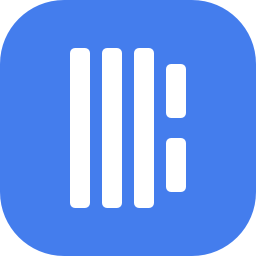Do you really know how to use Uniswap V4's "hook"?
Original source: 0x Todd
I recently saved some money in Uniswap V4, so I studied Uni’s hook carefully. Many people actually told me privately that after Uni launched V4, they didn’t feel the same amazing feeling as when V3 was launched. The main reason is that the concept of “hook” itself is too abstract and should be directly blamed.
In my humble opinion, Hook is better translated as plugin rather than hook. Hook itself is to add some functions beyond Uni itself to the pool. Its documentation repeatedly emphasizes when the hook can be called, but most people don't care. It's better to talk about what the hook can do.
[Examples of hook uses]
--For example, it allows you to create a pool, such as ETH-USDT, that is only available to certain addresses;
--Or, it can allow your pool to charge more fees when it is busy and less fees when it is idle;
--Or, it can even allow your pool to not use the X*Y=K curve (PS: I was probably inspired by Curve at the time).
All in all, you are free to develop all kinds of features that you need, which Uni officials may never launch.
It’s a bit like the creative workshop on Steam, where the official no longer operates it and allows other people to create freely.
Another change is that in the past, there were only two profitable niches on Uni, LP and traders, and the two were each taking advantage of the other. After V4, there are hooks, which actually allow some script kiddies to also have a profitable niche.
You write a hook, and others can pay to use your hook when they build a pool (selling... hooks...?). Each pool can use 1 hook plugin, but 1 set of hook plugins can be subscribed to countless pools, and the marginal cost is quite low. There is a website called Hook Rank that contains hundreds of hooks, and you can see how much money various hooks have made. At present, one of the most commonly used hooks, Flaunch, I think the developer has made more than 1 million US dollars.
What does it do? Using its hook, you can create a pool for meme coins and point any proportion of the pool's handling fee, for example, 80% to your own wallet, and then use 20% for repurchase.
Fortunately, Trump’s son didn’t know about this function when he issued $Trump, otherwise wouldn’t he have directed all the expenses to the future world finance?
In addition, as the saying goes, only your competitors know you best. Later, Pancake decisively introduced the hook, but it was not called V4 but Pancake infinity. Of course, this is another story. In short, the hook is still a very interesting thing, worthy of the name of V4.
Here is another practical use case of hooks.
Since Pancake launched Infinity (V4), the hooks of the BSC chain have also begun to develop. For example, the Brevis hook actually creates a VIP account effect on the chain: people who hold $CAKE for a long time will have lower transaction fees than others when trading the CAKE-BNB pool with this hook; for example, large users on the chain with high transaction volume can also have their transaction fees lowered by others.
It is speculated that this hook is triggered once before the transaction, so that special accounts correspond to special rates. It successfully made this familiar business with a third-party smart contract without changing the underlying Pancake. It is indeed quite thoughtful.
In addition, considering that each pool can usually only carry one hook, this pool is likely to become one of Pancake's selected pools in the future.
Brevis's main business is ZK, which is a portfolio of YZI Labs. I have mentioned before that ZK is the most difficult one in the industry. Now it is not difficult for me to personally go out and make a hook.
And if it can be strongly tied to Pancake in the future and launch various hook functions, maybe Pancake, as a DEX, will have more trading functions than Binance’s main site. Brevis, who launched various hooks, became the number one contributor to Pancake Infinity.
Looking forward to a new era of hooks.



